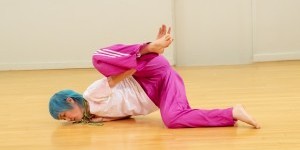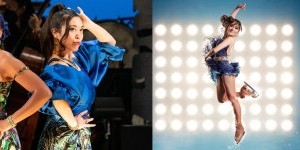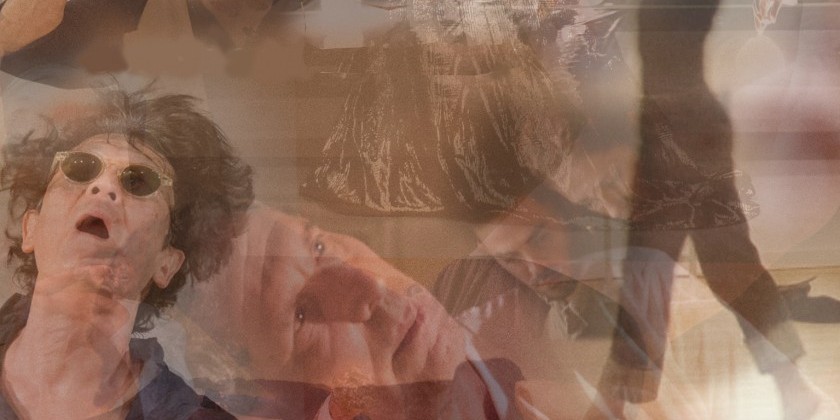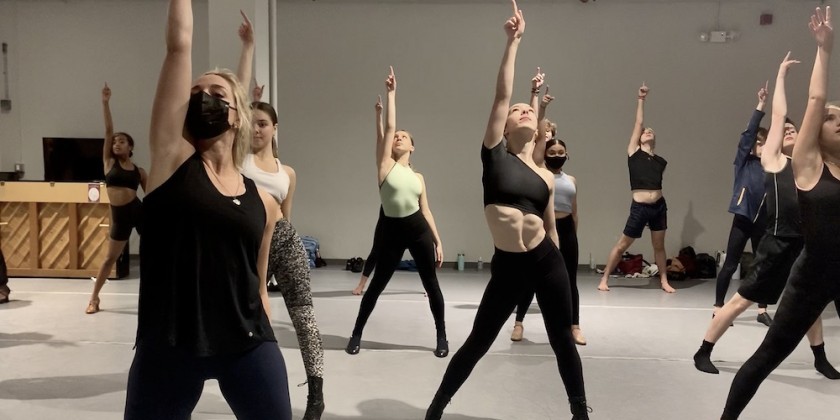"Motown The Musical" A Day in the Life of Broadway

Choreographers Patricia Wilcox and Warren Adams with Dancers Jesse Nager and Ephraim Sykes on Keeping True to the Motown Groove
Motown the Musical: “It’s What’s in the Grooves That Counts”
Stacey Menchel Kussell for The Dance Enthusiast
Capturing The Essence of Motown- A Fifty Year Journey
Motown the Musical is an experience in time travel. A fifty-year journey recounting the story of Motown Records founder, Berry Gordy, the show is a window into the soul of some of the most influential African-American musicians of the 20th century. The performers embody the big stars – Diana Ross, The Four Tops, and Marvin Gaye – as well as some artists who are known for a single hit or album such as Mary Wells, The Contours, and the Magnificent Montagues.
.jpg) |
Before seeing the show, I thought I was a Motown novice at best. I adored the classic flexed-hand gesture of The Supremes “Stop in the Name of Love” and the robotic
"Berry Gordy was very hands-on to make sure that the work was authentic,” said performer Jesse Nager, “I have never experienced such a biographical pressure in performing."
symmetry of The Jackson 5’s “Dancing Machine” but I was by no means a connoisseur. I was surprised to find that I actually knew the words to almost all of the sixty songs performed.Motown music has universal appeal and its sound has inspired communities worldwide. I had an opportunity to speak with the choreographic team of Patricia Wilcox and Warren Adams as well as with two performers in the cast, Jesse Nager and Ephraim Sykes, about narrating this iconic cultural experience through movement.
“We strove to capture the essence of Motown without resorting to caricature,” said Wilcox. “No one wants to see a re-created cartoon of themselves onstage.” The choreographers paid homage to signature moves, such as the smooth, synchronized footwork of The Temptations and the wild gesticulations of Jackie Wilson, but created all original movement.
“Berry Gordy was very hands-on to make sure that the work was authentic,” said Nager who portrayed a Temptation, a Commodore, and a Magnificent Montague. “I have never experienced such a biographical pressure in performing. These characters really lived and many still do, so you needed to pay extra attention to interpret them with due respect.”
Wilcox and Adams incorporated dance vocabulary from a variety of time periods. Early in the play, the performers bounced through the Lindy Hop. During scenes of the Civil Rights Movement the dancers marched militantly as Black Panthers, and in the later years the characters popped and locked like the break dancers of the 1980s.
The impressive numbers of songs and the incredible versatility of the performers truly amazed me. As I sang along, I realized that Motown music was a cultural soundtrack spanning years of societal change.
.jpg) |
“It really pushed me as a dancer and actor because there was such a wide range of movement,” revealed Sykes. “In one scene I was a cool debonair Temptation gliding and sliding with a polished jacket and tie, and in the next I was rocking an Afro in a disco jumpsuit as member of the Jackson 5.”
“We are taking history and giving it our own voice. This play is about looking at what Motown taught us, and how it is still moving us today.” -
Performer, Ephraim Sykes
Performer, Ephraim Sykes
Broadway Debut for Choreographers Warren Adams and Patricia Wilcox:
Two Artists, Two Different Backgrounds, A Singular Passion for Motown
Motown the Musical was the Broadway debut of both Wilcox and Adams, and their creative process was particularly unique because it was the first time each worked in a choreographic partnership.
“We had come from very different dance backgrounds. I had started in concert dance, and Patti had a wide array of experience in theater and ice skating,” said Adams. “We had to meld our experiences and paint the canvas with one brush.” The rehearsal process was intensive. The sixty-song show was actually cut back from a longer original version featuring close to ninety songs.
“There was a full story arc in the show and the movement needed to represent that. It was also important to create movement suitable for dancers as well as for vocalists,” said Adams. “Unlike modern dance which can be abstract, choreography for Broadway is a combination of theatricality, entertainment, and narrative – it has to tell a story.”
Even though they are from different continents – Adams was born in South Africa and Wilcox in the United States – both choreographers grew up dancing to the music of Motown and connected to its cultural unification. “The Motown experience definitely moved me as I experienced movements for racial equality in South Africa in the 1980s,” said Adams.
.jpg) |
Sykes first learned about Motown music from his parents. Although the music is part of the past, he feels the work is as timely as ever. “We are taking history and giving it our own voice. This play is about looking at what Motown taught us, and how it is still moving us today.”
On the night I attended, the crowd was full to the brim with people of all ages, races, and walks of life. As historic as Motown music is, the songs clearly resonate with a contemporary audience. Singing and clapping erupted throughout the show, (especially from the person sitting next to me) and dancing broke out in the aisles during the finale.













